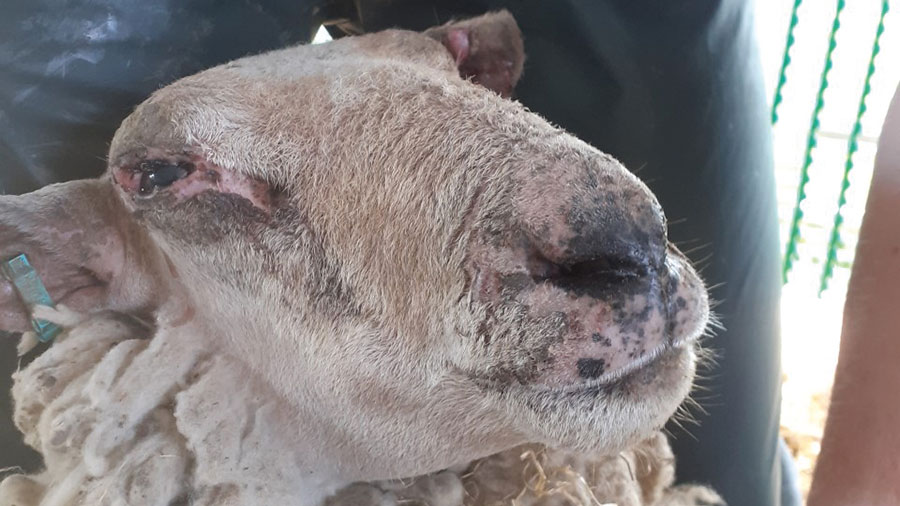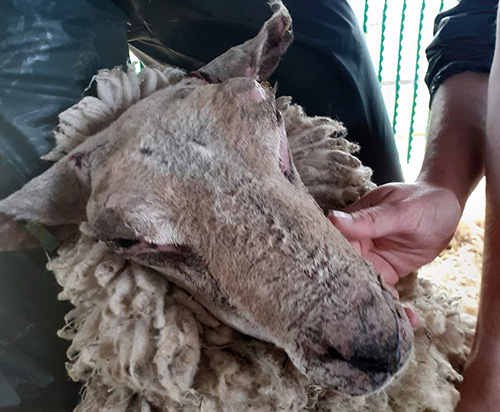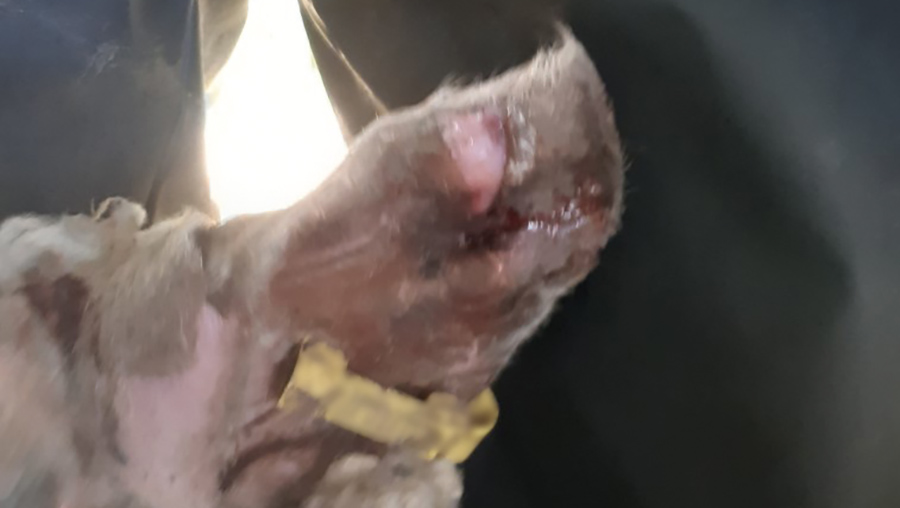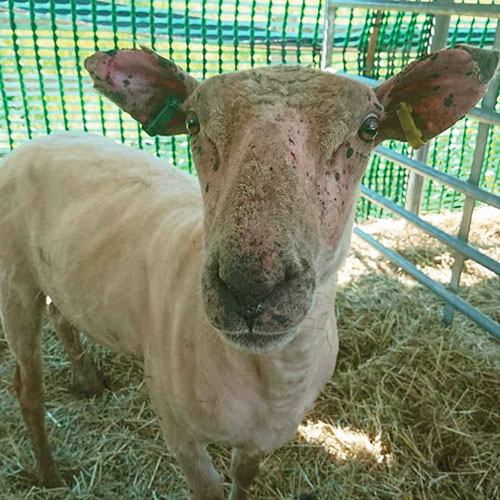How to treat photosensitisation in livestock
 © James Crilly
© James Crilly Photosensitisation occurs when the skin becomes extremely sensitive to sunlight, leading to what is effectively very severe sunburn, even in cloudy conditions.
It is very painful, and affected animals may be dull and depressed, or show signs of pain and irritation in the affected areas.
James Crilly, from Larkmead Veterinary Group, gives advice on how to treat and prevent the condition.
See also: Sheep scab: Symptoms, diagnosis and treatment
What causes photosensitisation?
There are three principle causes:
- Primary photosensitisation, where compounds within ingested plants cause the skin to become photosensitised. This form is seen in sheep and cattle grazing certain brassicas (mainly rape and kale), buckwheat (Fagopyrum esculentum), and those that eat certain weeds, such as St John’s Wort (Hypericum crispum)
- Secondary (or hepatogenous) photosensitisation is due to liver damage. The photosensitising agents are breakdown products of chlorophyll (the green pigment of plants). Usually, these are broken down by the liver, but if the liver is damaged they can accumulate. The most common example of this is the disease known as plochteach or yellowses, which is seen in animals grazing moorland, where they consume bog asphodel (Narthecium ossifragum). Plochteach is most commonly seen in two-to-six-month-old lambs, and is rare in adult sheep, but can affect up to 10% of lambs on some farms
- Contact photosensitisation, where contact with certain plants, notably giant hogweed (Heracleum mantegazzianum), causes the skin to become photosensitised. This is relatively rare in sheep and cattle, and usually only affects individual animals.
Photosensitisation also occurs in animals with inherited disorders that produce photosensitising agents through abnormal metabolic pathways.
Examples include porphyria of Holsteins, protoporphyria of Limousin cattle, and a condition of Southdown sheep.
In some cases, photosensitisation occurs most frequently in animals turned out onto lush pastures after spending a prolonged period indoors on preserved forage.
Facial eczema, a cause of photosensitisation common in New Zealand, does not appear to occur in the UK.
How do symptoms present?
Only unpigmented skin is affected, with thinly haired areas such as the ears and muzzle most at risk. These areas do not need to be uppermost – in cattle, teats can also be badly affected.

© James Crilly
Affected parts become swollen, with ears drooping, and eyes swollen shut in severe cases. Yellow tissue fluid may leak from the skin. Later, the skin becomes dry and cracked and may even feel cardboard-like.
Needless to say, it is very painful, and animals may be dull and depressed, or show signs of pain and irritation of the affected areas.
Skin damage allows bacteria to enter the body and significant loss of protein and fluid can occur through the cracked surface.
Where the face is affected, animals struggle to eat and drink and may die of dehydration, or misadventure through being unable to see. Badly affected peripheries, such as ear tips and teats, can slough off.

© James Crilly
What are the treatments?
Affected animals should be housed as soon as possible to protect them from further sunlight exposure, and permit entry of bacteria through damaged skin.
In sporadic cases, only individual animals need to be housed; but where large numbers are affected and at risk (for example, in the case of mobs of lambs grazing forage rape) movement onto other grazing is advised.
It is common practice to treat with a penicillin-based antibiotic, and a steroid anti-inflammatory to reduce swelling.
Depending on the cause, a vet may advise further treatments.

Sheep housed after treatment © James Crilly
Is prevention possible?
Prevention depends on the cause of the photosensitisation.
- If the condition is caused by primary photosensitisation due to brassica consumption:
Choose a variety of brassica which is less likely to cause photosensitisation- your agronomist or seed merchant can advise you
The risk is highest with young rape and kale plants, so avoid grazing these plants when they are too young (before 90 days for rape, before 150 days for kale).
- If primary photosensitisation is caused by the consumption of weeds, it usually only affects a small number of animals, so preventative measures are not usually required. It is not advised that cattle or sheep are grazed or fed on buckwheat.
- When secondary photosensitisation is caused by liver damage:
Identify the cause of the liver damage – it is usually due to consumption of certain plants. If these are confined to a small fraction of the grazing area, then avoidance (by fencing off) may be possible, but this is not usually practical.
- Contact photosensitisation usually only affects a small number of animals. Identifying and removing the inciting cause is advised, but care must be taken as these plants can cause photosensitisation in humans, too.
- If a congenital cause of photosensitisation is suspected, liaise with your vet about testing and a breeding plan to avoid future cases.
James Crilly joined Larkmead Veterinary Group in January 2017. He has a particular interested in sheep and goats and is a member of the European College of Small Ruminant Health Management, Sheep Veterinary Society (committee member) and Goat Veterinary Society.
